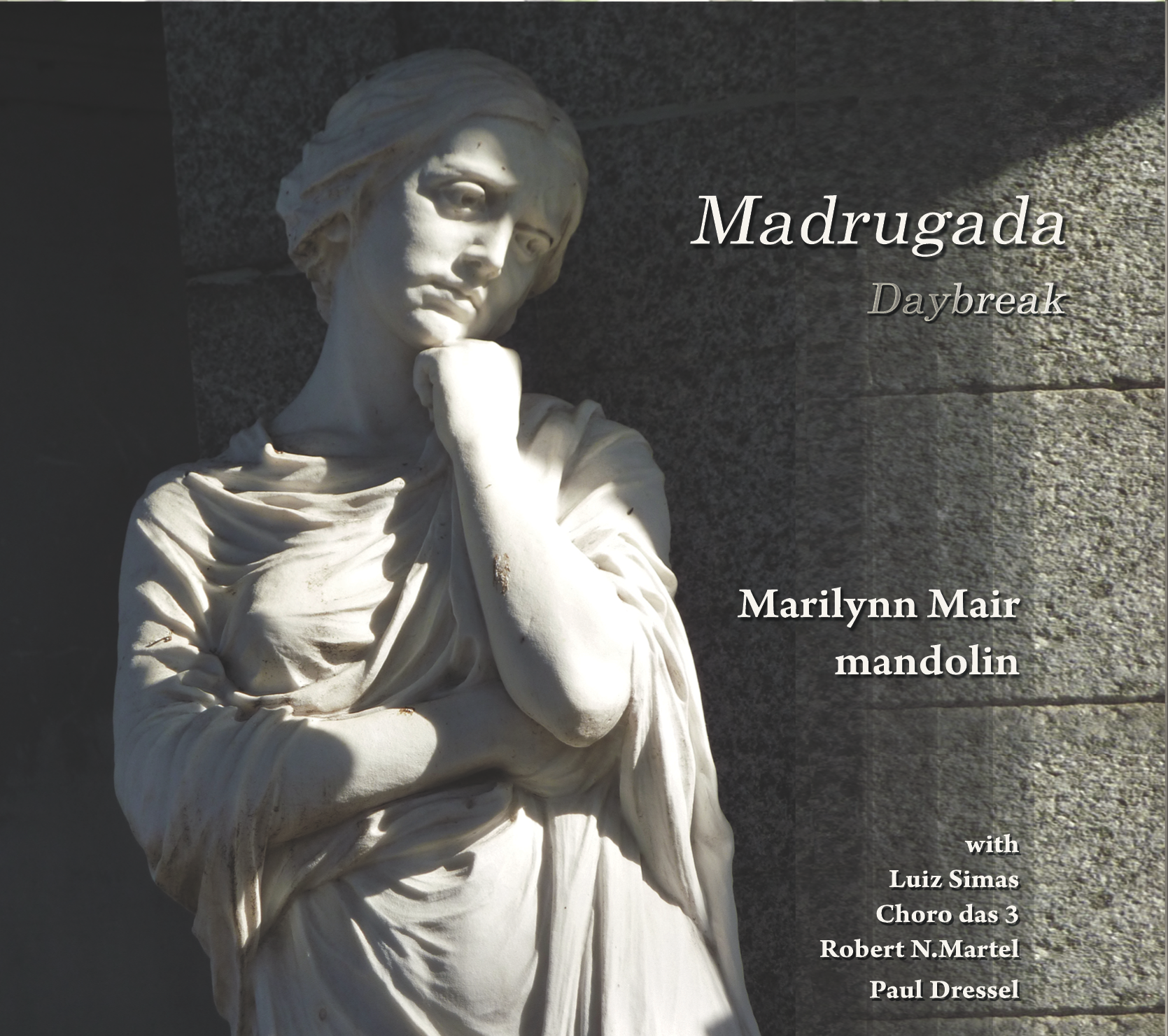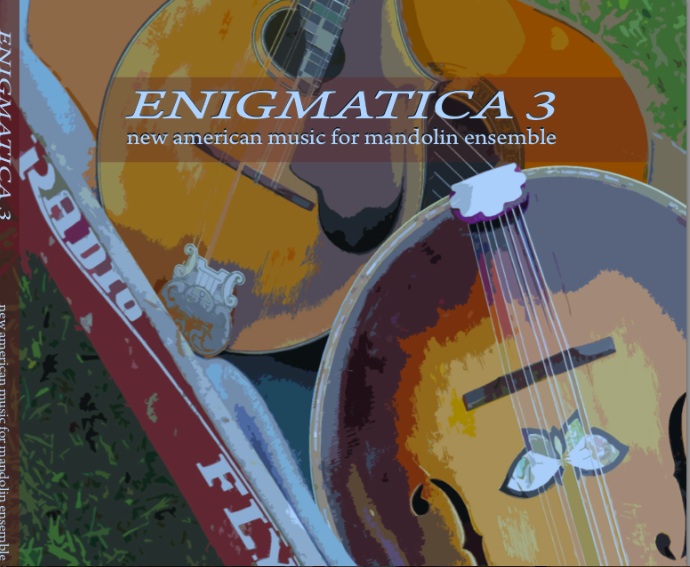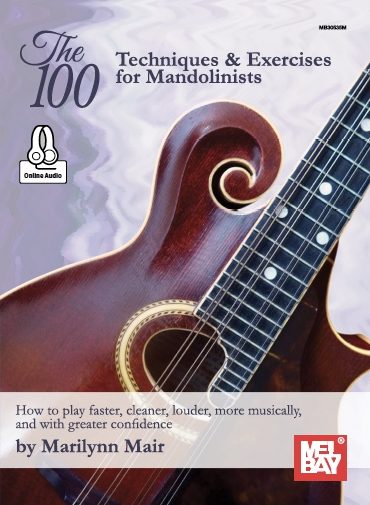— Rick Massimo, The Providence Journal (USA)
Mandolinist Marilynn Mair plays works written by her and other composers Sunday at Roger Williams University in Bristol. “I’m one of those people who gets ‘good ideas,'” says Marilynn Mair, her voice making the quotation marks obvious. “And when I get a ‘good idea,’ I have to do it.” That’s why the mandolinist is one of the busiest musicians in Rhode Island, and why she performs in three different combos on her latest disc, Leave Something Unexplained.
Mair performs in duo format with Boston-based guitarist Adam Larrabee; with Brazilian Paulo Sa and Czech Radim Zenkl in her group Mandolin World Summit; and with her seven-piece acoustic group Enigmatica. And on all the tracks, her commitment to the Baroque, classical, and Brazilian shines through, whether it be complex harmonies and unisons with Larrabee; the precision of Bach with Enigmatica or the romanticism of her work with Sa and Zenkl.
Leave Something Unexplained came about because Mair seized on a chance to record with Sa and Zenkl when they were in the United States this year; they bashed out several pieces the day before their Rhode Island concert. Then she added pieces with her other cohorts. Some of those pieces are original. “I’ve written songs before for the funny rock bands I’ve had,” Mair says; “I’ve written songs for accordion, for guitar, but I’ve never written on mandolin.”
So we get the swing feel of “East of Here,” written on Cape Cod after Hurricane Ophelia; the Caribbeanism of “Champagne/Diablo” and the sprawling “And She Has Flown,” written in memory of a departed friend. “It’s now gotten to be a kind of beautiful and resigned song,” Mair says. “When I recorded it, it was really angry.”
MAIR’S PLANS FOR the coming year include recording with Larrabee and the jazz-mandolin quartet The New England Mandolin Ensemble, as well as a three-month trip to Brazil in the spring to study with the masters of the choro form. “I’m really looking forward to becoming more fluent in Brazilian mandolin. I really don’t want to play like a gringo.” Not bad for someone who didn’t play the mandolin until after college.
“Somehow, when I picked up the mandolin … I was just blown away,” says Mair, who played piano and violin growing up. “And I just wanted to find music for it.” She ended up going to Europe to satisfy her quest. “I just became obsessed with it; I’m not sure why. That happened until I discovered choro, and I became just as obsessed with that.”
Along with the Brazilian songs on this record, Mair’s catalogue also includes 2001’s Nadando Em Luz (Swimming in Light), a collection of Brazilian classics. So, um, given that Mair grew up in Pennsylvania with Canadian parents, what is it with Brazilian music? “I’ve always been really fascinated by South American music,” Mair says. For one thing, there’s lots of repertoire for the mandolin.
“Mandolin is not a huge instrument in the world,” Mair says. Except for bluegrass and Brazilian, “there’s not a lot of stuff that is actually written for the mandolin.” Her first mandolin repertoire was Baroque music, “where they don’t really define the instruments.” Since then, she’s had to arrange a lot of pieces for the mandolin that weren’t originally written for it. “I can hear them on the instrument. I arrange a lot of pieces because I’m interested in a lot of different kinds of music. I don’t want to just play what’s there. I want to play what’s in my heart.”
Also, “the nice thing about Brazil is that they don’t make a distinction between classical and popular. And I’ve always been annoyed [by that distinction] — because I play classical, does that make it unpopular?”
ALONG WITH HER playing schedule, Mair teaches at Roger Williams University. Her courses include The Art of Rock ‘n’ Roll, an appreciation class that starts with the Carter Family and goes through 1997. She also teaches American music history and European musical history, as well as a senior seminar titled “Creating the American Image 1919-1941.” “It’s a cultural history of America between the wars, and it’s my premise that that is who we are in the world today — jazz, skyscrapers, gangsters, movies, the Lost Generation, F. Scott Fitzgerald.”
Mair also writes a regular column for Mandolin magazine. And this week, she’s sending off the manuscript of her book, The Complete Mandolinist. It’s a mandolin method book to be published, probably next year, by Mel Bay. The book, she says, was 2½ years in the making and includes Mozart and various forms of South American music. It also has exercises, some written by Mair, some from 19th-century American mandolin methods and European methods back to the 18th century.
“Maybe I’m a classicist,” says Mair with perhaps some understatement. “Maybe I like that approach.” But at this point, she says, her goal as a player is to get away from the written page. Hence the trip to Brazil, where she’ll play in choro jam sessions, and her improvisations with the New England ensemble. “At this point in my life, I’m trying to learn not to read [music]. I’m trying to play in jam sessions … It’s just as difficult and brilliant to not read as it is to read.”
As she teaches people in the classical tradition, showing them how to translate music on the page, “I’m working the other way myself.” Marilynn Mair celebrates the release of Leave Something Unexplained on Sunday at 2 p.m. at the Roger Williams University Performing Art Center, 1 Old Ferry Rd., Bristol. Call (401) 254-3568 for more information.




